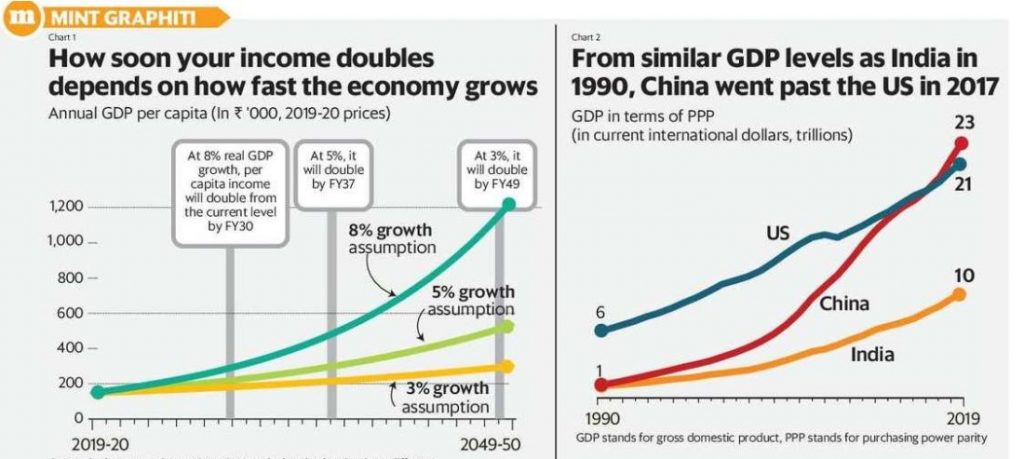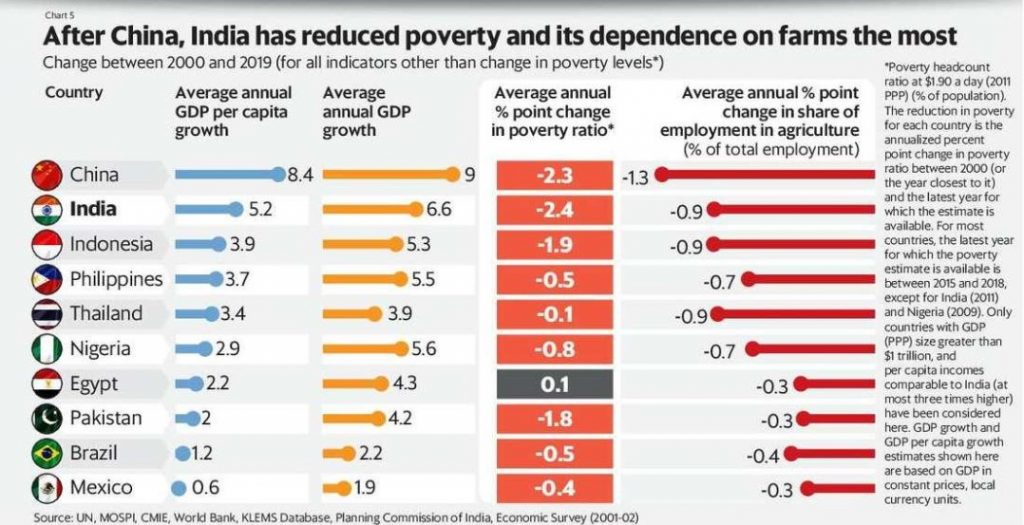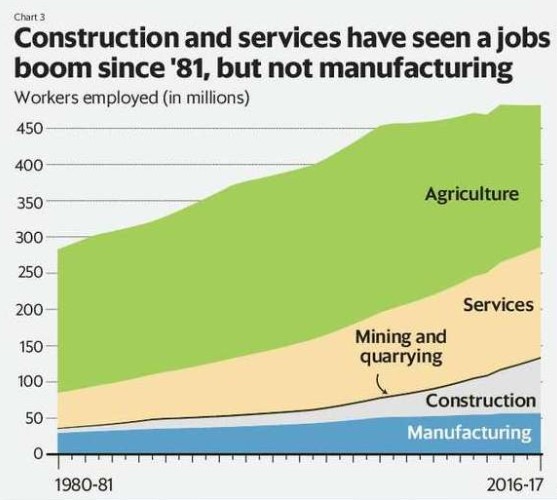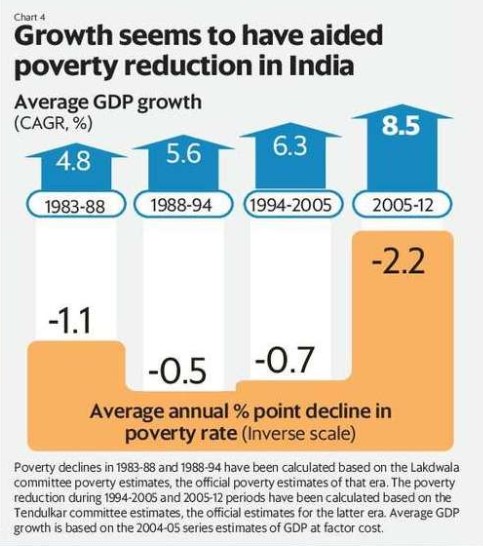Focus: GS-III Indian Economy
Introduction
India saw an unprecedented growth surge for more than three decades since the historic contraction of 1979, when India’s gross domestic product (GDP) contracted by more than 5% for the first time since independence.
The growth surge survived a balance-of-payments crisis, stock market scams, and multiple phases of political instability, pulling millions out of poverty.
Why Growth Matters?
Growth matters primarily because it directly impacts the average income levels.
Explaining with example in simple words: If GDP grows at an average inflation-adjusted (real) rate of 8% per annum, an average Indian would roughly double her income in 10 years. A more modest 5% GDP growth would mean that the same journey would take 17 years.
- The trajectory of growth will also influence how far can India stand up to external aggression and threats.
- Without fast, evenly-balanced growth, it won’t be possible to create enough decent jobs for the millions of youth who are joining India’s workforce every year.
- Growth not only boosts average income levels, but also generates extra funds for welfare programmes.

India and China GDP Growth Comparison
- China’s growth took off around the same time as India’s and till about 1990, the GDP of the two countries were roughly equal in terms of purchasing power parity (PPP).
- Since then, China zoomed ahead to eclipse the US, leaving India far behind.
- India’s growth performance has been superior to that of most other large developing economies in the world over the past few decades even if it has not been able to better China’s record so far

Shifting to non-farm jobs
- Nobel-winning economist Arthur Lewis showed that by moving surplus labour from the farm to the non-farm sector, developing economies could raise productivity in both sectors and raise overall savings and growth.
- Since then, several economies, including the fast-growing economies of East Asia, have followed the Lewisian transformation to shift workers from farms to factories, driving growth and reducing poverty at the same time.
India and the Sectors
- India’s growth process over the past four decades has also witnessed a shift away from farm to non-farm jobs, but the process has been lopsided and the transformation remains incomplete.
- The farm sector remains the biggest employer in the country, though the share of farm jobs has shrunk over time.
- Unlike in other fast-growing Asian economies, the new non-farm jobs have mostly been in construction and services, rather than in factories.
- The construction sector pays better than the farm sector, but offers only slightly more productive jobs.
- The services sector does offer some high-productivity jobs (such as in software services), but the bulk of the new service sector jobs in India have been low-end, such as in trade, transport, and storage with relatively lower productivity levels.

- If India is to create more high-productivity jobs, it will need fast growth spread across more sectors.
- India needs several more decades of rapid growth as its huge poverty challenge is being aggravated now by the pandemic.

-Source: Livemint



